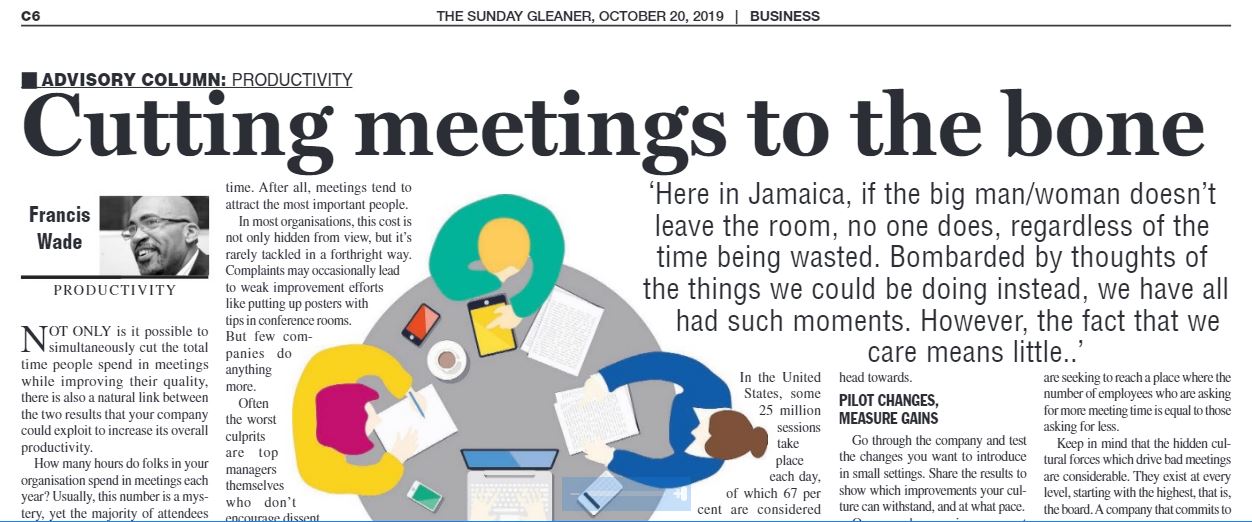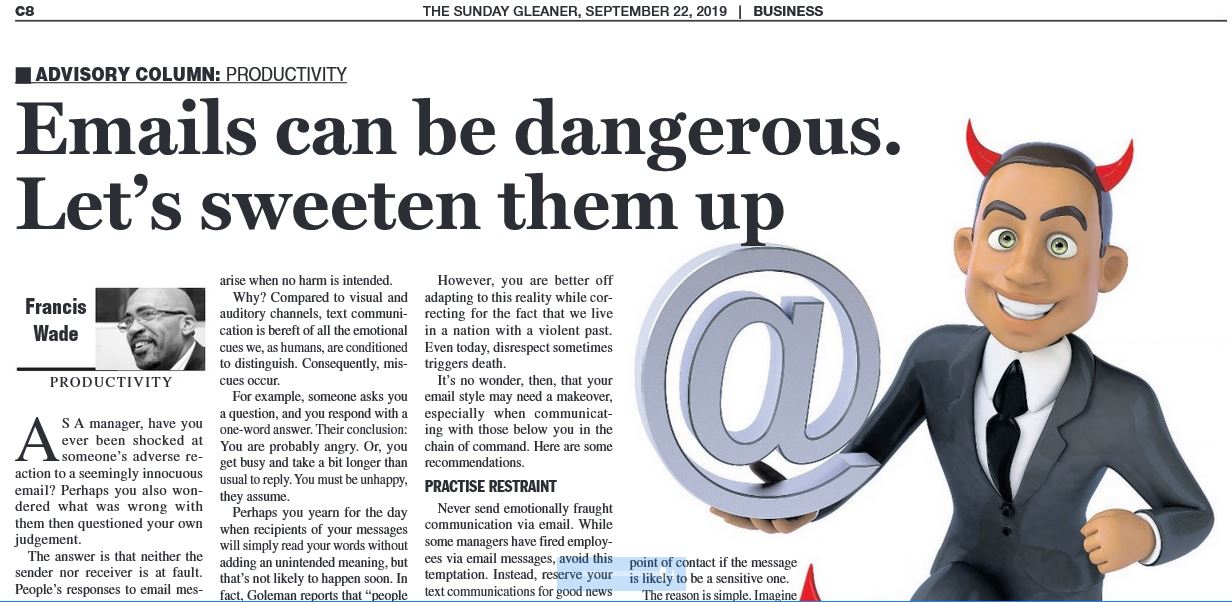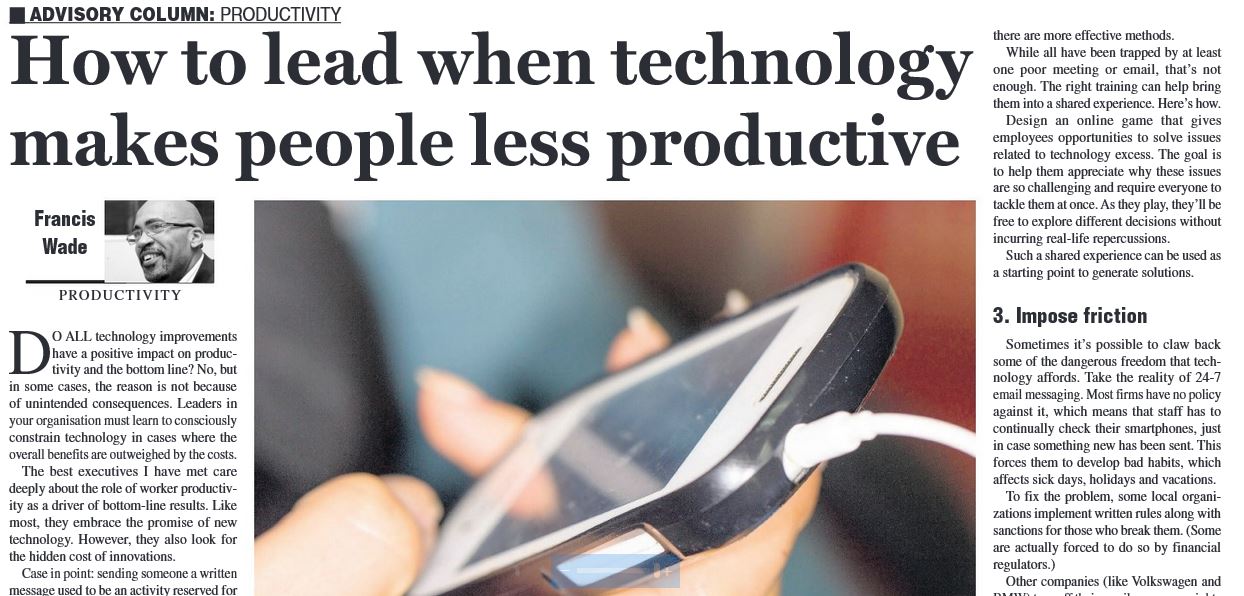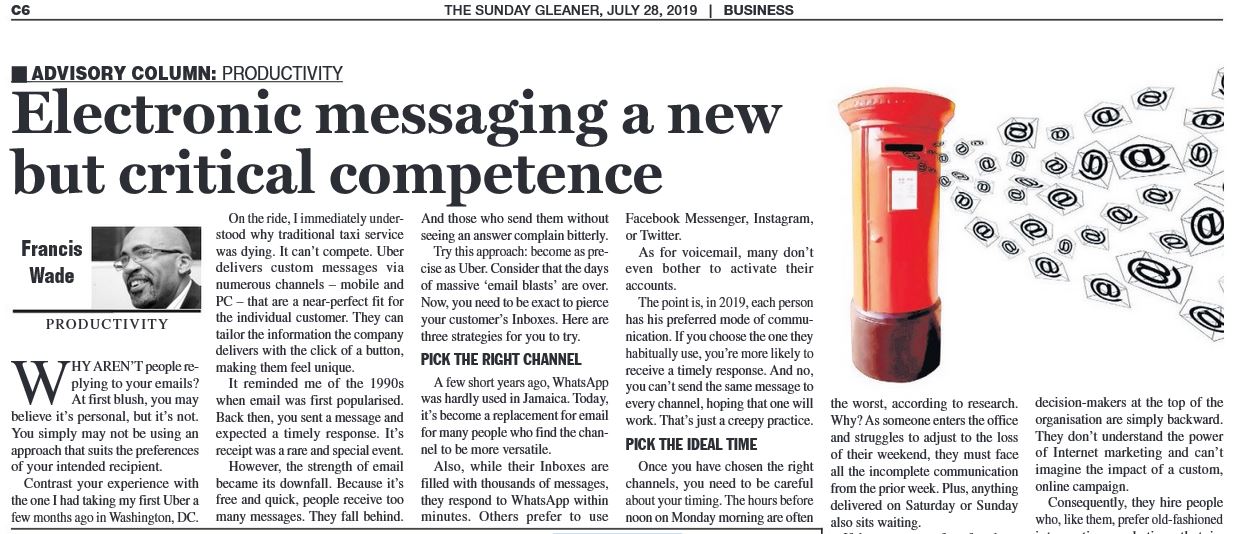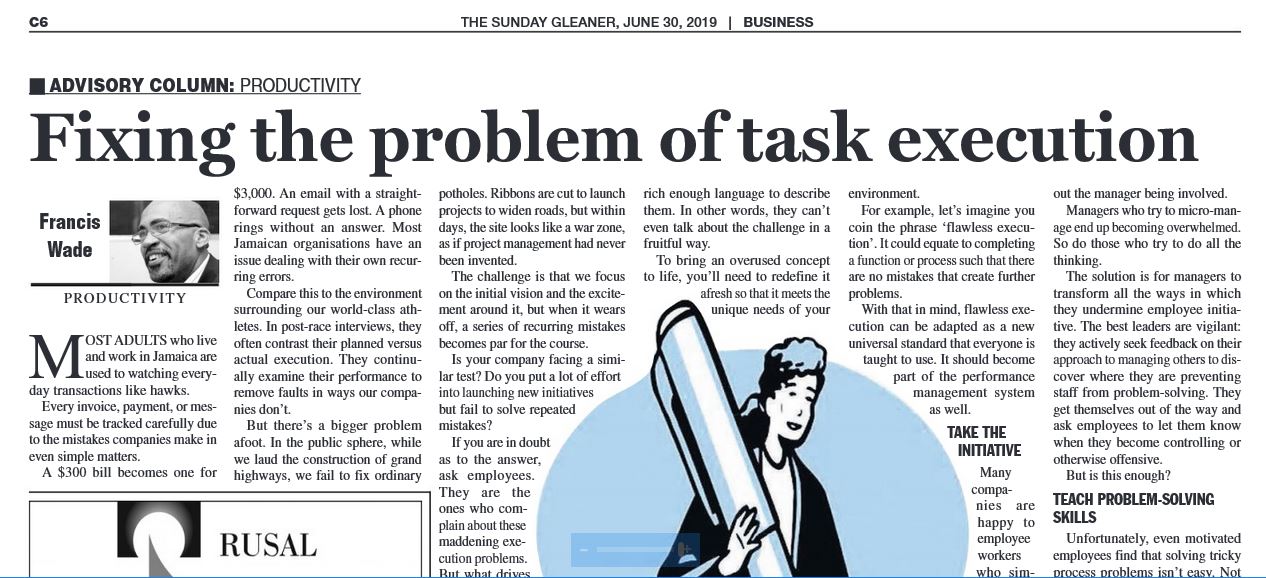How does a Jamaican executive create a culture of accountability in his/her company? While it’s clear that this trait is deeply correlated with success, why is it so hard to inculcate?
I remember returning home once to a surprising silence: the raucous sound of the grass being cut had stopped. When queried, the gardener remarked: “De lawnmower…it bruk.”
This everyday local comment isn’t remarkable, but there are a number of hidden meanings it conveys which deserve a deeper look. What does this commonplace remark: “It bruk” really mean?
Meaning #1 – “I apologize for breaking the mower and will see that it gets fixed.”
Perhaps we can agree that this particular motivation is almost never present. It’s a manager’s dream: that when something goes wrong, someone always steps up to be fully accountable. Whether you are the chairperson of a conglomerate or a homeowner who employs a helper, the yearning for accountability is the same.
Yet, there are merely a few, rare individuals who willingly take responsibility. Consequently, they are extremely valuable to their organizations. In fact, success (and profits) can be traced to the presence of such high performers. Conversely, in the worst companies, these people cannot be found.
But if this interpretation happens to be uncommon, what’s the normal one?
Meaning #2 – “It broke itself when I was very, very far away.”
This is the popular answer. I suspect that its prevalence in the Caribbean indicates that it was perfected in slavery days: a survival technique to avoid Massa’s ire. When people say “It bruk” they intend to assign the blame to a location that’s as remote as possible. It’s a way to create some psychological distance from the threat of harsh punishment.
In that coercive context from our history, the tactic was understandable. If you ever have a chance to read slaveowners’ letters complaining about lazy workers, you may notice something familiar. The tone sounds surprisingly like a contemporary manager’s email messages on the same topic.
What are the consequences for an organization whose staff has adopted this meaning as a mantra?
Unwanted Results
In today’s workplace, we routinely accept “It Bruk” as a rational response. In fact, we shouldn’t. It’s insidious.
Those who make such utterances are doing more than avoiding blame: they are actually reassigning the twin tasks of resolving the issue now and preventing it from happening in the future.
In other words, they render themselves powerless. They demote themselves to that of a bystander, making commentary on things they pretend to be separate from. As such, the problem is likely to recur.
The typical Jamaican manager knows exactly how to respond. Like a red flag to a bull, “It bruk” makes them swing into action, to take charge of the situation. Many become bullies, dominating others with loud commands and barked orders until a solution is put in place.
Skilled managers know better. Instead of taking the bait, they may ask: “And what will you do about it?” and “How will you prevent it in future?”
How to Get Past an “It Bruk” Culture
I have seen companies undertake a transformation by giving each employee the ability to own the “It Bruk” tendencies in their lives. However, this path is slow and expensive, relying on individual interventions.
Alternately, a group approach can help employees realize the corrosive power of non-accountability. In the same way that cursing in a convent is unacceptable, they can learn to hear “It Bruk” statements as if it were a foreign language unsuitable for the workplace.
The truth is that no-one wants to be told an “It Bruk” by anyone: not by colleagues, family members or political leaders. However, most of us are weak, unable to catch ourselves in the midst of this language. We need help. This aid can come from a strong corporate culture which teaches people to recognize the many varieties of “It Bruk” thinking.
But it won’t happen by edict. This is the job of a learning experience which offers a safe space to explore fresh ideas. But that would just be the start. This unusual transformation has to be reinforced with regular discussions between managers and their direct reports.
After a period of practice, your staff may see “It Bruk” expressions as the impediment they really are. Now, your organization can create a new language of responsibility to replace the old. Your intervention could support this outcome from every direction, making it easy for employees to step up their game.
The truth is that a culture of accountability launches everyone to higher levels of accomplishment, not only in their families but in all areas of their lives, bar none. It could be a transformational gift that changes their daily experience and your company along with it.


